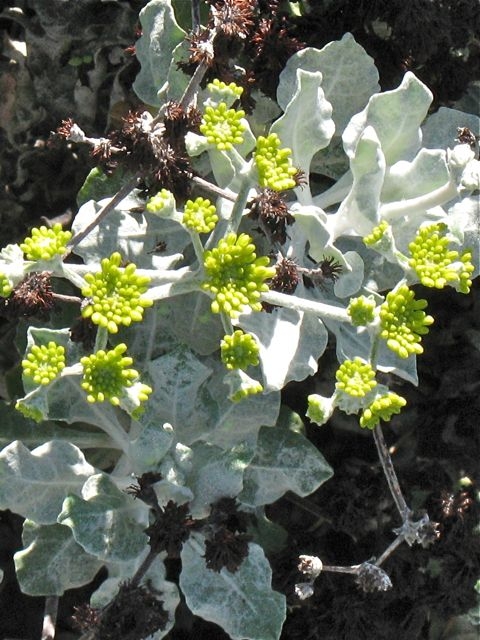Sulfur buckwheat recovering after the Angora fire near Lake Tahoe.
Native buckwheats come in both annual and perennial forms. They are some of the most popular nectar sources for butterflies and beneficial insects. The flowers last a long time, turning a rusty orange or chocolate brown (depending on the species) when the seed heads develop in the fall, so they add interest to the garden in all seasons. Buckwheats are very drought tolerant and some species can even handle salt spray.
St. Catherine's Lace, giant buckwheat. Photo: © Carol Nickbarg.
Saffron buckwheat. Photo: © Carol Nickbarg.
In addition to native plant sales, you can find buckwheats at some of the local native plant nurseries. Check out the California Native Plant Society's search engine for where to buy. For more information on buckwheat, here are some good sources: pests, more information on different species of buckwheat, and their use in hedgerows. To see what buckwheat species are found in your area, visit the Calscape website. You can enter map coordinates or a street address to find a list of California plants that are native to your location. May the buckwheat be plentiful in your future garden!
The browning flowers of sea cliff buckwheat. Photo: © Carol Nickbarg.
A honeybee feeding on sea cliff buckwheat. Photo: © Carol Nickbarg.




